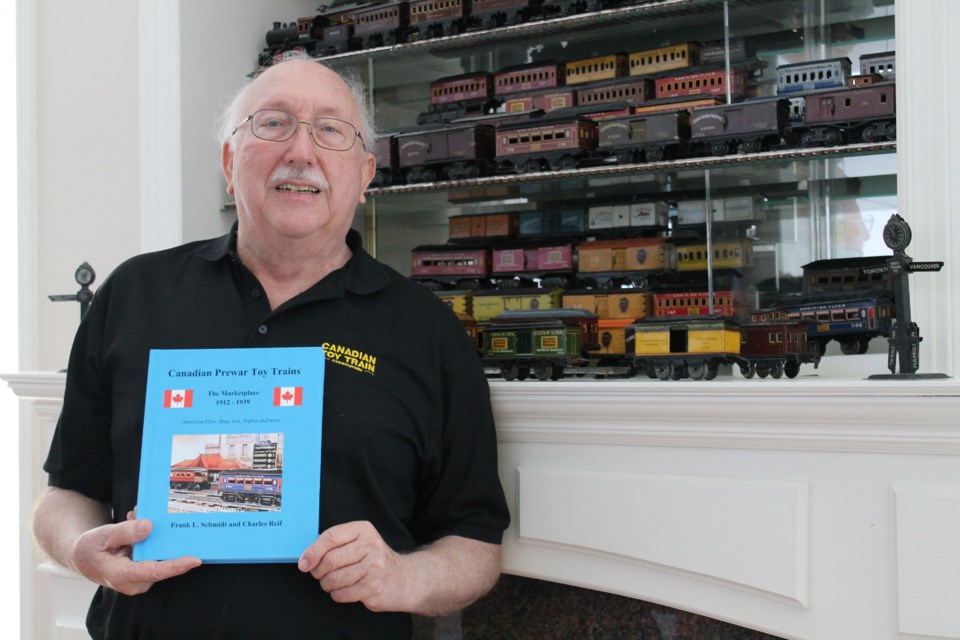There were doubts if a Richmond resident and his co-author would ever publish their book on the Canadian toy train industry.
However, COVID-19 finally made it happen after 11 years.
Frank Schmidt, a retired Richmond resident and avid toy train collector, and his friend Charles Reif, co-author and fellow collector, finally published their book “Canadian Prewar Toy Trains, The Marketplace 1912 – 1939” after more than a decade of writing, editing and mostly procrastination.
“There’s always the big question ‘why hasn’t someone written a book about this?’ that comes up and when (Reif) and I thought about it, we thought why shouldn't we be the ones writing the book if no one else did,” said Schmidt, adding that he and Reif met at the Canadian Toy Train Association – a B.C.-based toy train club.
“We wrote the book within the first year and then we went through four proofings throughout the next 10 years. Self-publishing your own book is not easy.”
Schmidt said it was difficult to keep writing and editing what they wrote for more than three to four months at a time, especially when they took time to travel and “enjoy the retired life.”
However, when COVID-19 hit, there was nothing to do except finish off the book.
“COVID-19 had its ups and downs and it was definitely a time to truly focus on publishing the book,” he said, adding that it felt amazing to be holding the physical copy of the book in the end.
When asked why he thought it was so important for him and Reif to finish the book, Schmidt said that it is not only a hobby but a part of Canadian history.
“Canadian toy trains, especially the Canadian National collection, were only available from through the Eaton’s catalogue up until about the 1970s and is part of the Canadian heritage,” said Schmidt, adding that he began collecting them since the late 1990s.
“These trains, which represents our Canadian railways, are now over 100 years old and they’re hard to find nowadays because many of them have rusted, were used in war metal drives or discarded.”
“Many of the trains … were rusted, used in war metal drives or discarded so that’s why it’s difficult to find them now.”
Schmidt told the Richmond News that he has over 400 toy trains in his home, but the most he has had at one time was about 500 before he sold some to other collectors.
“My wife would be the first person to tell you my toy train room is the largest room in the house, although I beg to differ. I think the kitchen is still the largest room in the house.
“The book is not technical and for anyone who is interested in the toy train retail scene 100 years ago, this would be an interesting book to read for them.”
Schmidt and Reif’s hardcover and softcover book can be found online at https://www.blurb.ca/b/10692740-canadian-prewar-toy-trains



